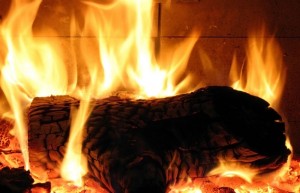Winter Fireplace Safety Tips
As winter quickly approaches, so does the beginning of fireplace season. However, certain safety measures should be taken into consideration before you begin using your fireplace regularly this winter. Chim Cheree, The Chimney Specialists like to educate our customers about fireplace safety to help them prevent disasters like a house fire or a carbon monoxide leak. The United States Fire Administration (USFA) and the Federal Emergency Management Agency (FEMA) have released an educational brochure with important winter fire safety tips, and we would like to share these tips with you to keep you informed with the best ways to prevent any hazardous fireplace-related incidents.
Call Chim Cheree, The Chimney Specialists to arrange an annual chimney sweeping and inspection, preferably right before winter begins.
The highest ranking tip in fire safety importance, having your chimney swept and inspected before fireplace season will ensure your chimney is free from hazardous and combustible creosote deposits. Creosote is a natural residue from the toxic byproducts of combustion that forms during the condensation process and builds up on the inner flue walls of your chimney. Creosote deposits are one of the main causes of chimney fires, and removing these deposits is a huge prevention of a residential fire. A pre-winter chimney inspection is equally important to check each part of your chimney to see if any essential repairs are needed.
Ensure your fireplace or wood-burning stove has been correctly installed.
If you have a wood-burning stove, it should have a clearance of at least 36 inches from combustible surfaces. These types of stoves also require proper floor support and protection. Chim Cheree, The Chimney Specialists recommend you have your fireplace and your wood-burning stove professionally installed to be sure all fire safety measures and codes are met.
Place a metal screen in front of your fireplace, or install glass fireplace doors.
Glass doors and metal screens prevent accidental home fires by keeping hot sparks and embers inside your fireplace instead of jumping out into your home, landing on something flammable, and possibly igniting a fire. These doors and screens also prevent objects from falling into the fireplace and protect people and animals from getting too close the fire and burning themselves.
Be sure the fire in your fireplace is out before you go to sleep at night.
If any hot ashes remain, you should never close the damper. Closing the damper could cause the fire to heat up again, which will force the poisonous gas, carbon monoxide, back into your home. If the damper is closed, the toxic gas has no other means of escape and can become trapped inside your living space.
When you use artificial logs, always follow the manufacturer’s instruction.
Never break an artificial log to try to get the fire to start more quickly. You should also only use one of these logs at a time because they often do not burn evenly. This causes the logs to release higher levels of carbon monoxide.
Do not overbuild your fire.
Using excessive amounts of paper to get a roaring fire going can be a fire hazard. Overbuilding a fire can make your interior flue temperature high enough for creosote deposits in your chimney to ignite and start a chimney fire.
Would you like to learn more fire safety tips for the winter? Contact Chim Cheree to find out more ways you can prevent fire hazards during the cold months of this season.

